|
|
|
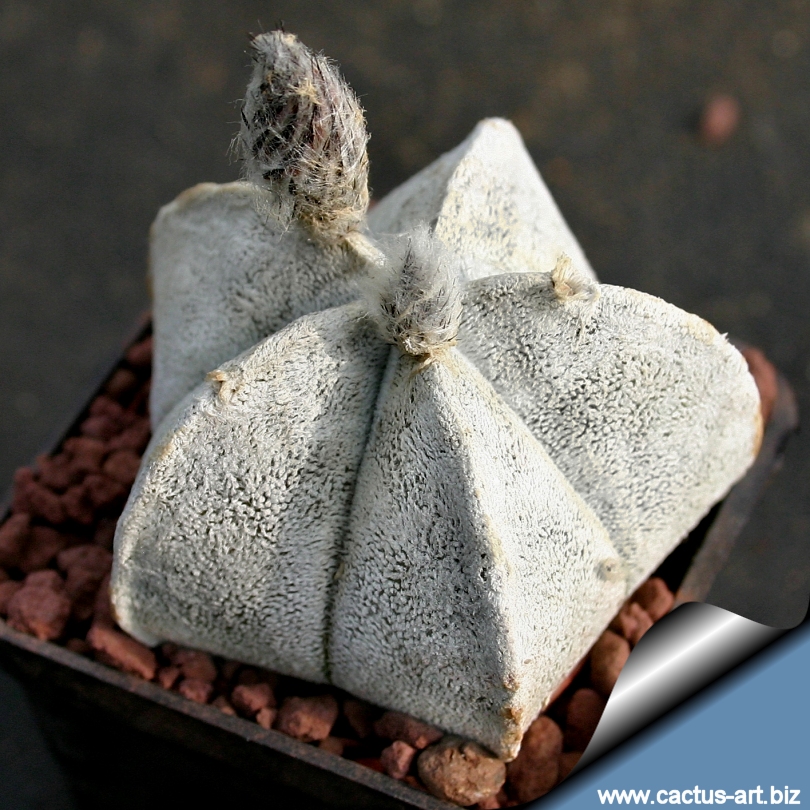
Dense white
woolly flecks cover the plants body
|
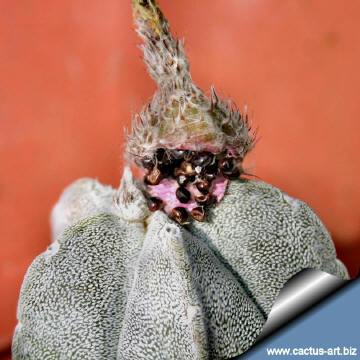 |
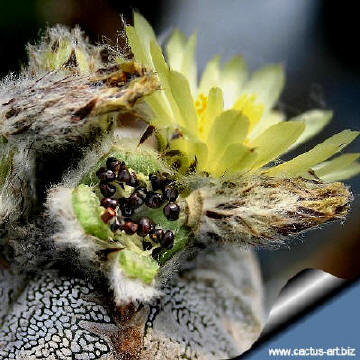 |
|
The
fruit of A. coahuilense (left) is pinkish and opens
basally,
it is very different from the fruit of
A. myriostigma (right) which is
very
hairy,
dehisces
apically and has a greenish inner colour.
|
|
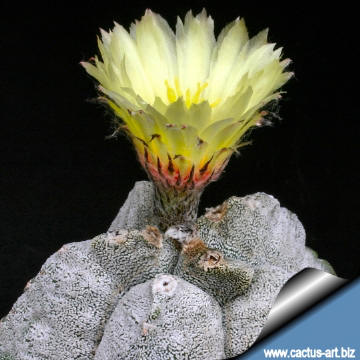
Flowers are yellow with a characteristic red
heart. |
Astrophytum coahuilense with five
ribs, has a surprising similarity to
A. myriostigma. However, it is different in all
characteristics regarding
flower,
fruit,
seed and
embryo which looks like in all details to Astrophytum capricorne.
The differences into flower, fruit, seed and embryo and
flecks are constant and permit in any case to distinguish
Astrophytum coahuilense without problems from
A. myriostigma.
Nude plants as in the case of Astrophytum myriostigma are unknown.
It looks like the bishop's cap (A. myriostigma), but softer, more grey
flecks that cover the plant even more than with the myriostigma.
The flowers are yellow with a characteristic red throat, although can
appear pure red or very seldom pure yellow. In the fruit which is red
till olive-green coloured and basal opening are up to 200 seeds, similar
as in the case of Astrophytum capricorne. This plant is more related to
the
Asterias/capricorne
group than the
myriostigma.
A. coahuilense and A. myriostigma when
cross-pollinated are fruitless: they are (usually)
sterile by each other. |
|
Cultivation is not too difficult in a
greenhouse, although grows
quite slowly. The plants need a loose well-drained
mineral soil. They need a good amount of
light.
Watering can be done weekly during
summertime, if the weather is
sunny enough, with a little
fertilizer added. Kept this way, plants will
show a
healthy, although slow
growth. They are
frost hardy to -4°
(-10°) C
Propagation:
By
seeds, remembering that
seedlings dislike strong
light and
dry conditions and need to be
repotted frequently. Eventually, as they become mature, they attain a
maximum size of 8-10 cm (20) cm. However, old plants become
senile and have
a tendency to succumb to
disease and a weak
root system. At this
stage,
as is well known, they
die suddenly. So, after they reach
10 cm in
diameter grow them slowly, and adopt a new repotting period, using
intervals of every 2 - 3 years. Additionally grow them under drier
conditions or with stronger sunlight. But plants are often
grafted to accelerate growth as
they would generally take at least a five years to reach
maturity on their
own, but the grafted plants are typical rather tall growing, compared
with plants on their own roots that are usually more flat to the
ground.
Photo of conspecific taxa, varieties, forms and cultivars of
A. cohauilense:
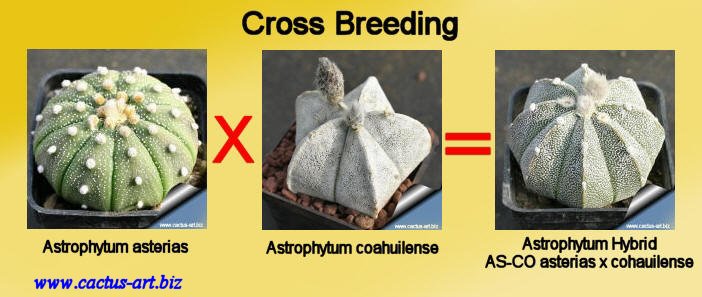
Below it is possible to see the result
of cross pollination between A. asterias and A. coahuilense
|
|


Advertising
|
|
|
|
Family:
Cactaceae
(Cactus Family)
Scientific name: Astrophytum coahuilense
(H. Möller) Kayser
Conservation status: Listed in
CITES appendix 2.
Origin: South-western Coahuila and Durante (Ciudad Lerdo,
Sierra Baicuco, western Sierra Parras and southern of this line up to
the Sierra of El Numero)
Habitat: They inhabit preferentially sunny south and east slopes
on
lime formations, rarely grow in north or west position between white
grey rock in a loose to thick
vegetation, which mainly consists of a dry bush
community. The
soil, consist mainly of lime gravel and
sand with isolated
humus feedthroughs.
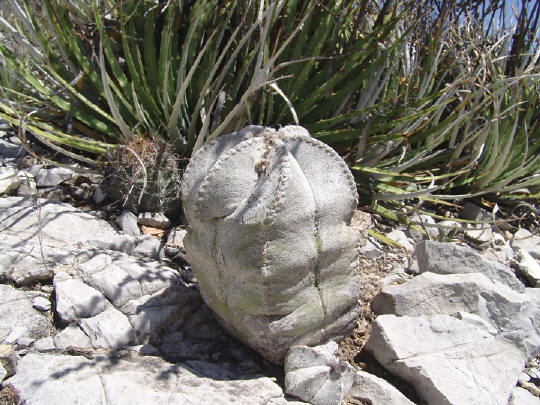
In habitat near Lerdo, Durango in association with
Hetchia sp. and Thelocactus bicolor
(
Photo and © Copyright by Marco Antonio Arroyo - Mexico )
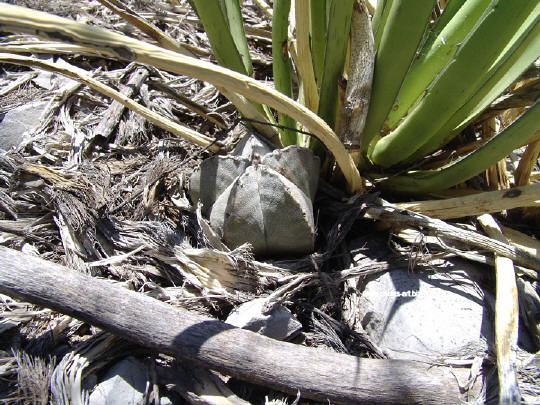
(
Photo and © Copyright by Marco Antonio Arroyo - Mexico )
|
|
|
|
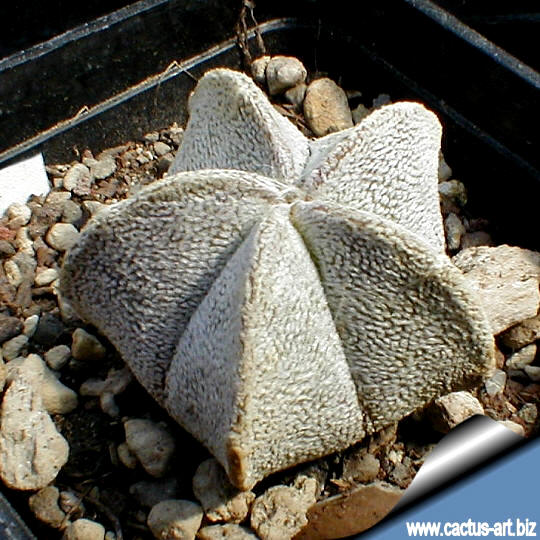
A young cultivated specimen
(SB1474 Lerdo, Durango, Mexico)
|
|
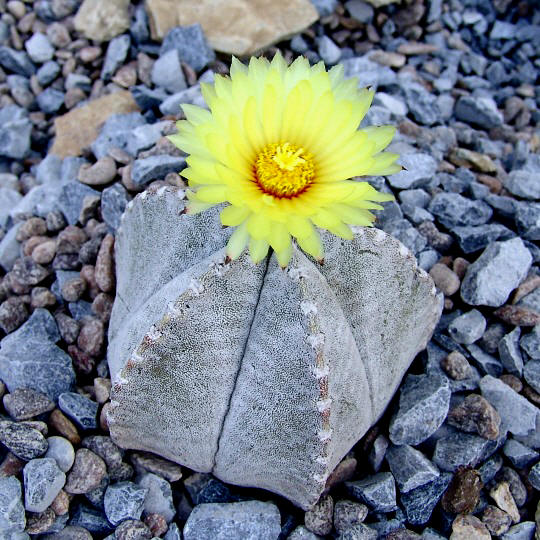
|
|